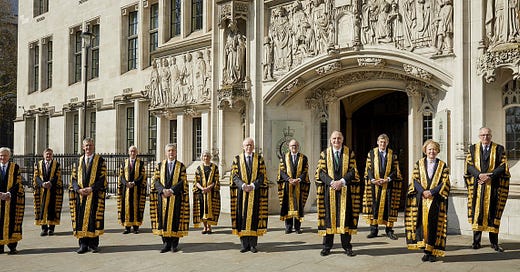The Supreme Court of the United Kingdom starts a new term today and begins hearing appeals tomorrow. However, this unique and rather wonderful image of socially distanced justices standing in order of seniority — with the president at the centre, the deputy president to his right, the third most senior on his left, and the others (apart from Lady Rose1) …
Keep reading with a 7-day free trial
Subscribe to A Lawyer Writes to keep reading this post and get 7 days of free access to the full post archives.



